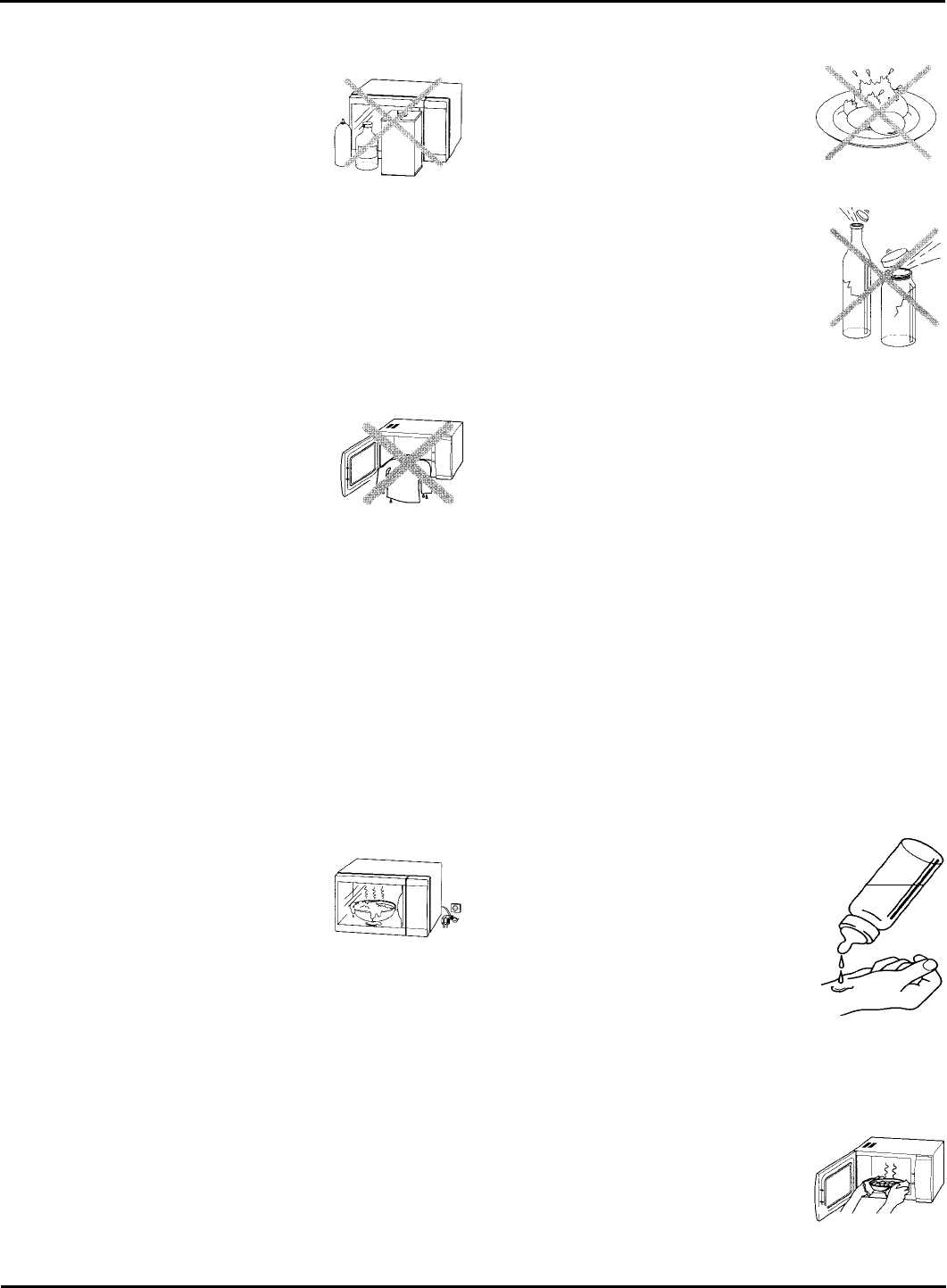
Important when using your microwave oven
Do not heat, store or use flammable
materials in or near the oven. Fumes can
create a fire hazard or explosion.
Use this appliance only for its intended use as described in
this manual.
Do not use corrosive chemicals or vapours in this appliance.
This type of oven is specifically designed to heat or cook food.
It is not designed for industrial or laboratory use.
Do not over-cook food. Fire could result.
Do not use your microwave oven for drying
textiles, paper, spices, herbs, wood, flowers,
fruit or other combustible materials. Fire could
result.
Do not leave the oven unattended, especially when using
paper, plastic or other combustible materials in the cooking
process. Paper can char or burn, and some plastics can melt if
used when heating foods. As with any appliance, close
supervision is necessary when used by children.
Remove wire twist-ties from paper or plastic bags before
placing bag in the oven.
If material inside the oven should ignite,
keep oven door closed, turn the oven off and
disconnect, the power cord or shut off power
at the fuse or circuit breaker panel.
Do not use your microwave oven for
cooking or reheating whole eggs with or
without shell.
Do not use your microwave oven for heating
food or liquids in airtight sealed containers.
The pressure increases and may cause
damage when opening or may explode.
Some foods which has a low water content e.g. oil, chocolate
and some pastries with sweet fillings, must be heated carefully.
Do not use your microwave oven for deep frying, because
you cannot control the oil temperature.
One of the major advantages of microwave ovens is the
short cooking time. Therefore, do not exceed recommended
times for cooking or re-heating food.
Always refer to a microwave cookbook for details. Especially,
if cooking or reheating food that contains alcohol.
After heating baby food or liquids in a baby
bottle, always stir and check the temperature
before serving. This will ensure that the heat
is evenly distributed and the risk of scalding
or burns can be avoided.
Ensure the Lid and the Teat is removed
before heating!
When heating liquids, e.g. beverages or water in your
microwave oven, overheating the liquid beyond boiling point
can occur without evidence of bubbling. This could result in a
sudden boil over of the hot liquid.
To prevent this possibility the following steps should be taken:
1. Avoid using straight-sided containers with narrow necks.
2. Stir the liquid before placing the container in the oven and
let the teaspoon remain in the container.
3. After heating, allow to stand for a short time, stirring again
before carefully removing the container from the oven.
Use hot pads. Microwave energy does not
heat containers, but the hot food does.
Use oven mitts when touching containers,
oven parts, and pan after cooking to prevent
burns.
2


















